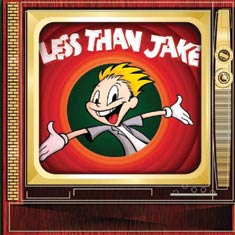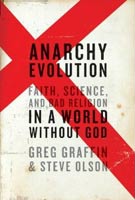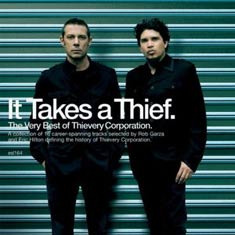Reviews, Concert Photography and other what-have-yous...
Friday, January 28, 2011
FILM REVIEW - LEMMY
116 min., dir. by Greg Olliver and Wes Orshoski, with Dave Brock, Phil Campbell, and Fast Eddie Clarke
It’s quite amazing that a full length documentary focusing on Lemmy Kilmister’s life and musical career had yet to be done until now. A career that has spanned nearly 50 years with over 36 years heading up Motorhead as lead singer and bassist — not to mention his rugged rock n’ roll lifestyle of booze, women, and drugs. He’s become somewhat of a living legend in the rock world: an example of either how to live the rock n’ roll life to the fullest with all of its vices, or an example of what not to do due to self-destruction.
In this 116-minute documentary directed by Greg Olliver and Wes Orchoski, the world that Lemmy lives in is exposed and explored inside and out. We witness life on the road, in the studio as well as life in Los Angeles, where Lemmy calls home. Several scenes are filmed inside Lemmy’s apartment, only a short few blocks away from his favorite hangout, The Rainbow Room Bar and Grill. One might feel somewhat ashamed or saddened to see someone like Lemmy live in such a dump, but it’s clear that he’s quite happy living where and how he lives — all while he proudly shows off his massive Motorhead and WW2 memorabilia collection that takes up almost every inch of his hole-in-the-wall digs.
Much of the 116 minutes of this film is taken up by interview footage of other musicians, celebrities, and artists either talking about personal experiences with Lemmy or the impact Motorhead’s music had on them. I mean, everyone and their mother were interviewed for this film — from Ozzy Osbourne and Billy Bob Thornton, to Ice T and Kat Von D. I think it’s great to have interviews for a film, but to feature more than 20 people talking about one man or band is a bit of an “Overkill” (pun intended) don’t you think? Although, Scott Ian’s scene talking about Lemmy wearing short-shorts back in the day is classic!
There’s some really cool studio footage of Lemmy jamming with Dave Grohl on a version of “Run Rudolph Run” and then talking about some of the greats of the beginning of rock n’ roll. Lemmy claims that Little Richard is the greatest rock n’ roll vocalist who’s ever lived. There’s also some great footage of Lemmy joining Metallica on stage to perform Motorhead’s “Damage Case.”
Beyond the accolades given to Lemmy from fellow musicians and artists, there are a few hard hitting segments that tug at the heart strings. At one point, Lemmy is interviewed inside his apartment and one of the directors asks, “What is the most precious thing in this room?” to which Lemmy quickly replies, “My son,” and slaps him on the knee. When the question is asked, the viewer has no idea his son (Paul Inder) is sitting there off-screen. Later on, Paul states he was really shocked his father came across with that answer.
The filmmakers also address the claims that Lemmy is either a Nazi or a Nazi sympathizer head on, and Lemmy adamantly dismisses those claims.
Some of Lemmy’s childhood and youth is discussed, but not to that great of an extent. I would have loved to have been told more about his years growing up in England. There’s some good insight into his musical beginnings with The Rockin’ Vickers, then being a rodie for Jimi Hendrix and eventually joining the space-rock psychedelic outfit Hawkwind.
A drug bust in Canada led to his departure from Hawkwind, as members of the band claim he was uncontrollable. In turn, he formed Motorhead (which originally was named Bastard). Now this could be an understatement, but drugs and alcohol are a big part of Lemmy’s life, present and past. A lot of the accolades given to Lemmy by his fellow musicians complement him on being such a professional while living the hard life he’s chosen to live. He claims he never touched heroin but has tried everything else. When asked point blank if he had any regrets, he replies with a stone cold serious “No…life’s too short.”
Lemmy in all it’s hard rock glory will be able to reach even those who don’t care for Lemmy’s vocals or Motorhead’s music — he’s an interesting man when you look at the life he’s led. Fans of the band will appreciate some of the live footage filmed in England and Russia, as well as some short interviews from Mikkey Dee and “Fast” Eddie Clark. The film was nicely put together, but at nearly two hours long, I would have cut out some of nonessential shots, bringing it down to 90 to 100 minutes. I have to be honest, watching Lemmy live as he does, especially in his apartment, I felt a bit sad for the man. By the end of the film, I admire his ethics on life and can rest easy knowing that Lemmy is out there doing what he wants and what he loves. Money? Fame? What are these things? To Mr. Kilmister, this is just apart of the life he’s been dealt. You can’t feel bad for a man who lives life the way he wants to. “Born to lose, live to win” — sounds like a good way to head through this screwed up life to me.
ATHLETICS – Why Aren’t I Home?
The album has a unique flow that really makes it hard to predict while listening to it for the first time. Usually I’m not one for over-the-top production on albums (as it usually takes away from the music), but in this case, the mixing and production of this album was spot on and without it, Why Arent’ I Home? would be missing a lot. “Lullby” is by far my favorite track on the album, with its sick drum beat, tweaked out guitar riffs, and gut-wrenching vocals. From beginning to end, Why Aren’t I Home? is an amazing album that will catch a lot of people off guard, especially coming from a band new to the independent music scene.
(Deep Elm Records, 210 N. Church Street, Suite 2502, Charlotte, NC 28202)
Monday, November 22, 2010
LESS THAN JAKE – TV/EP
TV/EP is an 11-minute and 30-second collection of television theme songs and commercial jingles. This would not be the first time LTJ has covered TV theme songs, as they released a vinyl seven-inch back in 1996 covering the theme songs to “The Dukes of Hazzard,” “Three’s Company,” “The Jeffersons,” and “Happy Days.” TV/EP doesn’t list the themes/jingles covered, but instead lists them as “Channel One,” “Channel Two,” and so forth. Some of the covered theme songs include “Laverne & Shirley” (a cover they released on Losers, Kings and Things We Don’t Understand back in 1996), “Diff’rent Strokes,” “Animaniacs,” “Married With Children” (which is essentially a quasi-cover of Frank Sinatra’s “Love and Marriage”), and “Spongebob Squarepants.” The jingles covered range from the commercial for Hungry Hungry Hippos to the jingle for Kit-Kat candy bars.
While hardcore LTJ fans will dig this as another one of those odd releases to add to their collection of Pez-influenced LTJ paraphernalia (ever look at their vinyl discography?), others will see the release as a one-shot novelty act worthy of only one listen. I think this release might have done better if it was done on DVD or video rather than an audio format – interestingly, a visual aid version of this can be found on the front page of LTJ’s website (www.lessthanjake.com). The covers themselves are nicely done and quite witty, but I don’t see fair-weather fans of Less Than Jake going apeshit over this release. This is definitely one for the LTJ collector.
(Sleep It Off Records, C/O Paper + Plastick Records, PO Box 12081, Gainesville, FL 32604)
Friday, November 12, 2010
STIMULATORS – Loud Fast Rules!
On the crest of this crossover, the Stimulators were one of the first bands to start to incorporate this new aggressive sound. Loud Fast Rules features the band performing live back in 1980, featuring a 12-year-old Harley Flanagan on drums (Flanagan would go on to play drums and bass for the infamous New York City hardcore outfit Cro-Mags). The original release of Loud Fast Rules was released on cassette, so the audio on this re-release is about as good as you can expect from drawing the masters off of a mono-analog recording. The music itself is raw and driving, especially on the more fast tempo tunes like “M.A.C.H.I.N.E” and “Crazy House Rock.” There are also some more catchy pop-hooked songs featured here like “Dah Dah Dah” and “Blind Ambition,” and a cover of Kiss’s “Rock and Roll All Night.” There’s a lot of Ramones and Clash influence in these songs as well (and as expected).
Going back to Harley Flanagan, the fact he was only 12 years old when this was recorded blows me away. His drumming is clearly the highlight of this album, extremely tight. Re-releasing Loud Fast Rules will give the masses a chance to pick up a pivotal piece of New York music history, an album that influenced a generation of underground musicians not just in New York, but the world over.
(ROIR, PO Box 150-460, Van Brunt Station, Brooklyn, NY 11215)
Sunday, September 26, 2010
ANARCHY EVOLUTION: FAITH, SCIENCE, AND BAD RELIGION IN A WORLD WITHOUT GOD by Greg Graffin and Steve Olson
Anarchy Evolution explores what is at the root of the inquisitive mind of Dr. Graffin when it comes to the subject of evolutionism versus creationism. The study of evolutionism through the works of people like Charles Darwin fascinated Greg as a child and proved to be a driving force in his life as laid out in this book, and, of course, in the lyrics to Bad Religion’s music.
Anarchy Evolution reads like two books in one. Half of the book is written in an autobiographical sense as Graffin details growing up in Wisconsin, his family, moving out west to LA, and the events leading up to the founding of Bad Religion with Brett Gurewitz. The other half reads like a textbook, with detailed passages that feel like they came right out of his lecture series at UCLA (where he teaches evolution). He ties the personal and educational together by drawing examples of how certain parts of his life (especially his teenage years) echo the natural effects of anarchic evolution — hence the title of the book.
Graffin challenges almost every aspect of religious rule in this book, well beyond evolution. He challenges the claim of an eternal afterlife and spends a good deal of time talking about the falsehood of natural selection. He also tackles the issue of being an atheist. Graffin himself doesn’t really consider himself a so-called atheist, but really a “naturalist” — as in someone who believes solely that no supernatural entities were or are involved in creating what we know as the universe. His naturalist worldview is based upon “observation, experiment, and verification.” He spends a good deal of time in this book detailing many of his adventures observing nature and gathering evidence in collegiate field studies, including an amazing story about a trip to the Amazon while working at the Los Angeles County Museum of Natural History in 1987. This trip would change Greg’s life forever.
Much of Anarchy Evolution could be considered adequate reading material for an introduction into the history of evolutionary biology. After all, this was written by someone who teaches this material to students at UCLA. So some of this material might be already common knowledge, depending on your educational background. If you’re not up on the subject of evolutionary biology, don’t be surprised if you have to re-read passages as some of this information is quite deep in facts, names, and dates. Luckily, there are nearly 50 pages of cited notes in the back of the book.
For the Bad Religion fans out there, this book will also please your need for random stories about people and places involved in the creation of the band and the making of some of your favorite albums. So while you’re learning about why Greg Graffin was arrested in high school, you’ll also be learning about a certain type of ant that lives in the forests of central Mexico.
Anarchy Evolution is clearly a work of love by a man that loves his work. His views on religion don’t aim to offend, but rather to question the religious status quo. He simply refuses to believe in something that he can’t observe or investigate, as it goes against his naturalist worldview. He studied the evidence and came to the conclusion that there is no supernatural being issuing a hand of assistance (or dominance) in creating the world and universe as we know it today, tomorrow, and in the distant past. He invites you to question the answers and make up your own mind by doing your own investigating and observing. A very insightful and interesting read.
Friday, September 17, 2010
THIEVERY CORPORATION – It Takes a Thief
Thursday, September 16, 2010
Show Review: Megadeth and Slayer at the Long Beach Arena, 8/30/10
 | ||||||
| Megadeth Front-man Dave Mustaine |





